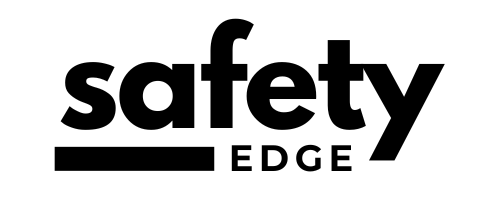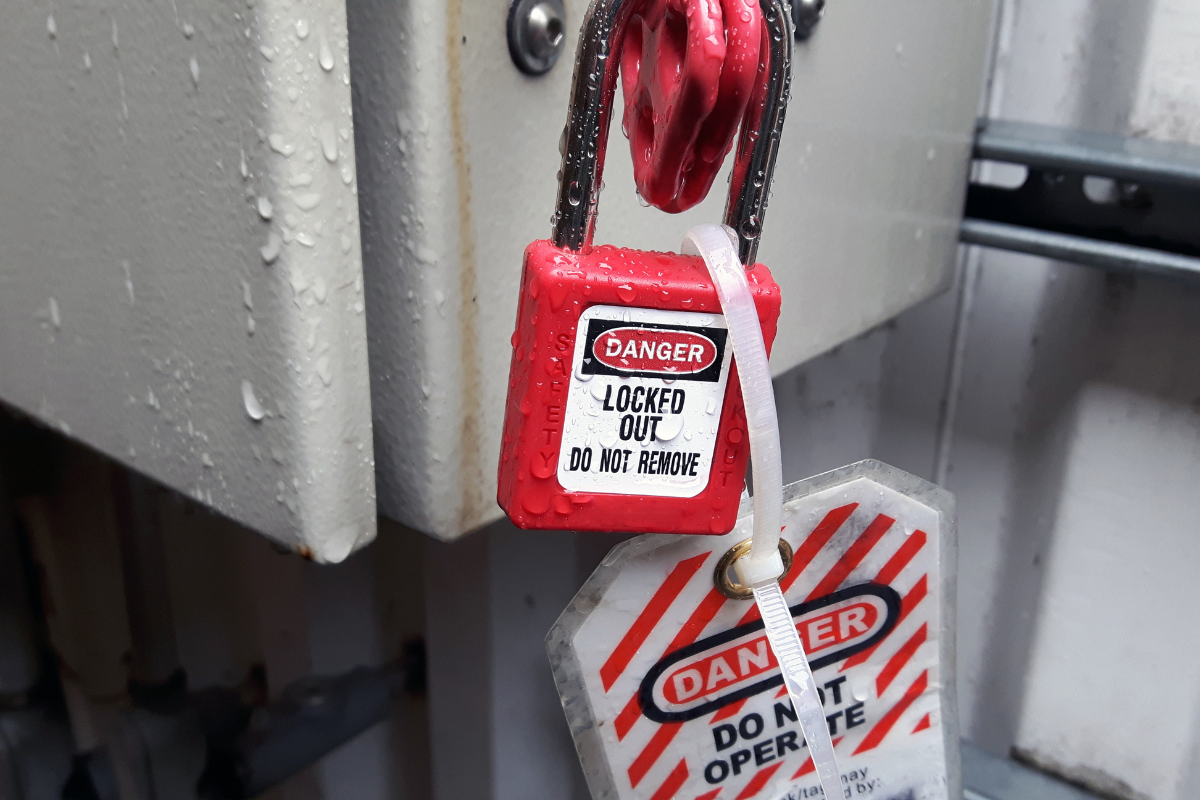Looking to enhance safety and productivity in your workplace? Look no further than toolbox talks! These concise and interactive training sessions are a powerful tool for engaging your employees and fostering a culture of safety. In this comprehensive guide, we will unlock the full potential of toolbox talks and show you how to make them an integral part of your training program.
Effective toolbox talks go beyond mere information dissemination. They provide an opportunity to educate and empower your workforce, enabling them to identify hazards, assess risks, and take proactive steps to prevent accidents. By incorporating real-life examples, interactive discussions, and hands-on demonstrations, you can truly enhance the training experience and encourage active participation.
Throughout this guide, you will discover proven strategies for creating impactful toolbox talks, from selecting relevant topics and tailoring content to engaging your audience and measuring the effectiveness of your sessions. Whether you are a seasoned safety professional or new to toolbox talks, this guide will equip you with the knowledge and tools to drive positive change in your organization.
Unlock the power of toolbox talks today and elevate the safety and performance of your workforce to new heights!
What are toolbox talks?
Toolbox talks, also known as safety talks or tailgate meetings, are short and informal training sessions that focus on specific safety topics. They are typically conducted at the worksite, before the start of a shift or task, and involve a group of employees and their supervisor or safety professional. The purpose of toolbox talks is to create awareness, share knowledge, and address safety concerns related to the specific job or industry.
Toolbox talks are an effective way to communicate important safety information and reinforce safe work practices. They provide an opportunity for open dialogue, allowing employees to ask questions, share experiences, and contribute their insights. These discussions help to build a strong safety culture by involving everyone in the process and making safety a collective responsibility.
Importance of toolbox talks in the workplace
Effective toolbox talks play a crucial role in maintaining a safe and healthy work environment. They serve as a proactive measure to prevent accidents, injuries, and occupational hazards. By regularly conducting toolbox talks, organizations can address potential risks, reinforce safety protocols, and keep their workforce informed about the latest safety standards and procedures.
Toolbox talks also promote employee engagement and empowerment. When employees are actively involved in safety discussions, they feel valued and respected. This sense of ownership motivates them to take personal responsibility for their safety and the safety of their colleagues.
Additionally, toolbox talks help to bridge the gap between theory and practice. While formal training programs provide employees with the necessary knowledge, toolbox talks allow them to apply that knowledge in real-life scenarios. This practical approach enhances learning retention and ensures that employees are well-equipped to identify and mitigate risks in their daily work activities.
Benefits of effective toolbox talks
Implementing effective toolbox talks in your organization can yield numerous benefits. Firstly, they improve safety awareness. By regularly discussing safety topics, employees become more alert and conscious of potential hazards. This heightened awareness translates into a safer work environment, reducing the likelihood of accidents and injuries.
Secondly, effective toolbox talks promote a culture of continuous learning. By encouraging open dialogue and information sharing, organizations create an environment where employees are motivated to expand their knowledge and skills. This culture of learning not only enhances safety but also boosts productivity and performance.
Furthermore, toolbox talks foster teamwork and collaboration. When employees come together to discuss safety topics, they develop a sense of camaraderie and shared responsibility. This collaboration extends beyond the toolbox talk sessions and spills over into their day-to-day work, where they actively look out for each other’s safety.
Finally, effective toolbox talks contribute to regulatory compliance. By addressing specific safety requirements and industry standards, organizations demonstrate their commitment to ensuring a safe working environment. This proactive approach not only protects employees but also shields the organization from potential legal and financial consequences.
In the next section, we will explore how to prepare for a successful toolbox talk and deliver engaging sessions that captivate your audience.
How to prepare for a successful toolbox talk
Preparation is key to delivering a successful toolbox talk that resonates with your audience. Here are some essential steps to ensure your toolbox talk is well-planned and impactful.
1. Select a relevant topic: Choose a topic that is directly related to the job or task at hand. Consider the specific risks and hazards associated with the work environment and select a topic that addresses those concerns. This will make the toolbox talk more relatable and meaningful for your audience.
2. Research and gather information: Once you have selected a topic, gather all the necessary information and resources. Conduct thorough research to ensure you have accurate and up-to-date information. Look for real-life examples, case studies, and statistics that support your message. This will add credibility to your toolbox talk and make it more compelling.
3. Tailor the content: Customize the content of your toolbox talk to suit the needs and understanding of your audience. Avoid using technical jargon or complex terminology that may confuse or alienate your listeners. Instead, use simple and concise language that is easy to understand and remember.
4. Structure your talk: Organize your toolbox talk in a logical and coherent manner. Start with an attention-grabbing introduction to pique your audience’s interest. Then, present the main points of your talk in a clear and systematic way. Use headings, subheadings, and bullet points to make the information more digestible and visually appealing.
5. Prepare visual aids: Visual aids can significantly enhance the effectiveness of your toolbox talk. Use PowerPoint slides, charts, diagrams, or videos to reinforce your message and engage your audience. Visuals not only make the content more memorable but also cater to different learning styles.
Follow these steps to ensure your toolbox talk is well-prepared and delivers the desired impact. In the next section, we will explore tips for delivering engaging toolbox talks that captivate your audience.
Tips for delivering engaging toolbox talks
Delivering an engaging toolbox talk requires more than just sharing information. It involves capturing your audience’s attention, keeping them engaged throughout the session, and inspiring them to take action. Here are some tips to help you deliver toolbox talks that leave a lasting impression.
1. Start with a hook: Begin your toolbox talk with a compelling story, a thought-provoking question, or an interesting fact. This will instantly grab your audience’s attention and create a sense of curiosity. Starting strong sets the tone for the rest of your talk and encourages active listening.
2. Use storytelling techniques: Storytelling is a powerful tool for engaging your audience. Share real-life examples, anecdotes, or personal experiences that illustrate the importance of the safety topic. Storytelling humanizes the content and makes it more relatable, allowing your audience to connect emotionally with the message.
3. Encourage participation: Toolbox talks should be interactive and encourage active participation. Ask open-ended questions, seek input from your audience, and encourage discussion. This not only keeps your audience engaged but also allows them to share their knowledge and experiences. Actively listening to their perspectives and incorporating them into your talk fosters a sense of inclusivity and ownership.
4. Use visuals effectively: Visual aids can greatly enhance the impact of your toolbox talk. Use relevant images, charts, or videos to support your message and make it more memorable. However, be mindful of not overwhelming your audience with too many visuals. Use them sparingly and strategically to complement your talk, not distract from it.
5. Keep it concise and focused: Toolbox talks are meant to be short and concise, so make sure you stay on track and avoid going off on tangents. Stick to the main points of your talk and deliver the information in a clear and straightforward manner. Avoid overwhelming your audience with excessive technical details or irrelevant information.
By following these tips, you can deliver toolbox talks that are engaging, impactful, and well-received by your audience. In the next section, we will explore how to use interactive techniques to further enhance the effectiveness of your toolbox talks.
Engaging employees through interactive toolbox talks
Interactive toolbox talks go beyond traditional lecture-style presentations. They involve active participation from the audience and create a dynamic learning environment. Here are some interactive techniques you can incorporate into your toolbox talks to engage your employees and make the sessions more memorable.
1. Group activities: Divide your audience into small groups and assign them a task or scenario related to the safety topic. Ask them to brainstorm solutions, identify potential hazards, or develop strategies to mitigate risks. This not only encourages teamwork but also stimulates critical thinking and problem-solving skills.
2. Role-playing: Role-playing allows employees to practice real-life scenarios in a safe and controlled environment. Assign roles to different participants and ask them to act out specific situations related to the safety topic. This hands-on approach helps employees understand the practical application of safety procedures and builds their confidence in dealing with potential risks.
3. Demonstrations: Incorporate hands-on demonstrations or simulations into your toolbox talks. Show your audience how to properly use safety equipment, demonstrate correct procedures, or simulate emergency situations. This visual and experiential learning approach helps employees understand the practical aspects of safety and reinforces the importance of following proper protocols.
4. Quizzes and games: Incorporate quizzes or games into your toolbox talks to make them more interactive and fun. Create a short quiz to test your audience’s knowledge before and after the talk. Use game-based activities like jeopardy or crossword puzzles to reinforce key safety concepts and encourage active participation.
5. Case studies and discussions: Share real-life case studies or incidents related to the safety topic and facilitate a discussion around them. Encourage your audience to analyze the situation, identify the root causes, and propose preventive measures. This not only enhances their critical thinking skills but also allows them to learn from real-world examples.
By incorporating these interactive techniques into your toolbox talks, you can create a dynamic and engaging learning experience for your employees. In the next section, we will explore toolbox talk topics for different industries.
Evaluating the effectiveness of toolbox talks
Evaluating the effectiveness of your toolbox talks is essential to ensure continuous improvement and measure the impact of your training efforts. Here are some methods you can use to evaluate the effectiveness of your toolbox talks:
1. Feedback surveys: Distribute anonymous feedback surveys after each toolbox talk to gather input from your audience. Ask them to rate the session’s relevance, clarity of information, and overall effectiveness. Encourage them to provide suggestions for improvement and identify any gaps in their understanding.
2. Observations and assessments: Observe your audience during the toolbox talk to assess their engagement, level of participation, and understanding of the topic. Take note of any questions asked, discussions generated, or misconceptions clarified. This firsthand observation will provide valuable insights into the effectiveness of your toolbox talk.
3. Post-training assessments: Conduct post-training assessments to measure the retention and application of knowledge. This can be in the form of quizzes, practical assessments, or scenario-based exercises. Compare the results of the pre-training and post-training assessments to gauge the effectiveness of your toolbox talk in improving knowledge and skills.
4. Incident and accident data: Monitor incident and accident data to determine if there is a correlation between the topics covered in toolbox talks and the occurrence of incidents. Analyze trends and patterns to identify areas where additional training or focus may be needed.
5. Employee feedback and participation: Regularly seek feedback from employees to gauge their perception of the effectiveness of toolbox talks. Encourage them to actively participate and share their insights during the sessions. Their engagement and willingness to apply the knowledge gained from toolbox talks can be a strong indicator of their effectiveness.
By implementing these evaluation methods, you can gather valuable feedback and insights that will help you improve the effectiveness of your toolbox talks and drive continuous improvement in your organization’s safety culture. In the next section, we will explore tools and resources that can assist you in creating impactful toolbox talks.
Tools and resources for creating impactful toolbox talks
Creating impactful toolbox talks requires access to reliable information and resources. Here are some tools and resources that can assist you in creating engaging and effective toolbox talks:
1. Industry-specific guidelines and standards: Consult industry-specific guidelines and standards to ensure your toolbox talks align with best practices. These guidelines provide valuable insights and recommendations for addressing specific safety concerns in your industry.
2. Government and regulatory websites: Government and regulatory websites often provide free resources, training materials, and toolbox talk templates. These resources can serve as a starting point and provide you with a solid foundation for creating your own toolbox talks.
3. Safety training software: Safety training software platforms offer a range of features and tools to create, deliver, and track toolbox talks. These platforms streamline the process by providing ready-made templates, interactive content, and tracking capabilities. They also allow you to easily distribute toolbox talks to remote or dispersed teams.
4. Safety training consultants: If you need expert guidance and support in developing impactful toolbox talks, consider engaging the services of safety training consultants. These professionals have extensive knowledge and experience in creating engaging and effective training materials tailored to your industry’s specific needs.
5. Online safety communities and forums: Joining online safety communities and forums can provide access to a wealth of knowledge and resources. These communities are a great platform for networking with safety professionals, sharing best practices, and exchanging toolbox talk ideas.
By leveraging these tools and resources, you can create impactful toolbox talks that are both informative and engaging. In the next section, we will conclude this guide.
Conclusion
Toolbox talks are a powerful tool for engaging your employees and fostering a culture of safety. By incorporating real-life examples, interactive discussions, and hands-on demonstrations, you can truly enhance the training experience and encourage active participation.
Throughout this guide, we have explored the importance of toolbox talks in the workplace, the benefits they bring, and how to prepare and deliver effective sessions. We have also discussed interactive techniques, toolbox talk topics for different industries, evaluating their effectiveness, and the tools and resources available to create impactful toolbox talks.
Remember, the key to successful toolbox talks lies in their



